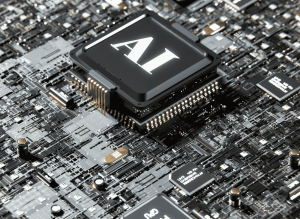Introduction: The Problem with Nutrition Myths
Nutrition plays a vital role in our health, yet misinformation about what constitutes healthy eating is rampant. From fad diets to conflicting advice, it’s easy to feel overwhelmed and confused about making the right choices. These myths not only create misconceptions but can also lead to unhealthy habits. This guide aims to debunk common nutrition myths and provide evidence-based insights to help you understand what healthy eating truly looks like.
In today’s information age, it’s more critical than ever to separate fact from fiction. Understanding the truth about nutrition empowers individuals to make informed decisions that promote long-term health and well-being.
Nutrition Myths vs. Facts
Myth 1: Carbs Are Bad for You
Carbohydrates have earned an undeserved bad reputation thanks to trendy low-carb diets. The truth is that carbs are the body’s primary energy source and are essential for overall health.
- Fact: Not all carbs are created equal. Refined carbs, such as white bread and sugary snacks, can lead to blood sugar spikes. However, complex carbs, like whole grains, fruits, and vegetables, provide fiber, vitamins, and sustained energy.
- Takeaway: Focus on nutrient-dense carbs rather than eliminating them entirely. For instance, quinoa and sweet potatoes are excellent choices that provide sustained energy and essential nutrients.
Myth 2: Fat Should Be Avoided
For decades, dietary fat was vilified as the primary cause of weight gain and heart disease. However, modern research shows that fat is a necessary part of a balanced diet.
- Fact: Healthy fats, such as those found in avocados, nuts, seeds, and olive oil, support brain health, hormone production, and nutrient absorption. It’s trans fats and excessive saturated fats that should be limited.
- Takeaway: Incorporate healthy fats into your meals while keeping portion sizes in check. For example, a handful of almonds or a drizzle of olive oil can add flavor and health benefits to your dishes.
Myth 3: Eating Late at Night Causes Weight Gain
Many people believe that eating after a certain time automatically leads to weight gain. While timing can influence digestion and sleep quality, it’s the total caloric intake and quality of food that matter most.
- Fact: Consuming more calories than you burn, regardless of the time, is what leads to weight gain. Eating nutrient-rich foods, even at night, won’t sabotage your health goals.
- Takeaway: Pay attention to your overall diet rather than focusing solely on the clock. If you’re hungry at night, opt for light snacks like Greek yogurt or a small handful of nuts.
Myth 4: Detox Diets Cleanse Your Body
Detox diets and juice cleanses often claim to rid the body of toxins and promote weight loss. While these programs may sound appealing, they lack scientific support.
- Fact: Your liver and kidneys are highly efficient at detoxifying your body naturally. Restrictive detox diets can lead to nutrient deficiencies and are unnecessary for most people.
- Takeaway: Support your body’s natural detox processes by eating a balanced diet rich in whole foods and staying hydrated. Incorporating foods like leafy greens and citrus fruits can aid your body’s detox mechanisms.
Myth 5: Gluten-Free is Always Healthier
The gluten-free diet is essential for individuals with celiac disease or gluten intolerance, but it’s not inherently healthier for everyone.
- Fact: Gluten-free products are often highly processed and may lack important nutrients like fiber and iron. For those without gluten sensitivity, whole grains like wheat, barley, and rye are nutritious staples.
- Takeaway: Only adopt a gluten-free diet if medically necessary. Instead, focus on incorporating a variety of whole grains to support digestive and overall health.
What Healthy Eating Really Looks Like
Healthy eating is about balance, variety, and sustainability. Here are the key principles to build a nutritious and enjoyable diet:
Focus on Whole Foods
Whole foods, such as fruits, vegetables, whole grains, lean proteins, and healthy fats, should form the foundation of your diet. These foods are minimally processed and rich in nutrients that support overall health. Studies show that diets rich in whole foods can reduce the risk of chronic diseases like diabetes and heart disease by up to 30%.
Prioritize Portion Control
Eating the right portions helps prevent overeating while ensuring you get the nutrients your body needs. Use tools like smaller plates, portion guides, or mindful eating techniques to stay aware of your intake. For instance, filling half your plate with vegetables, a quarter with lean protein, and a quarter with whole grains creates a balanced meal.
Include a Rainbow of Colors
A colorful plate is not just visually appealing but also nutritionally diverse. Different colors in fruits and vegetables often indicate a variety of vitamins, minerals, and antioxidants.
- Examples: Red tomatoes for lycopene, orange carrots for beta-carotene, and green spinach for iron and folate.
- Tip: Aim to include at least three different colors in every meal to maximize nutrient intake.
Stay Hydrated
Proper hydration is essential for digestion, energy levels, and overall health. Aim for at least 8 cups (64 ounces) of water per day, adjusting based on activity level and climate. Herbal teas and water-rich foods like cucumbers and watermelon can also contribute to hydration.
Practice Moderation
All foods can fit into a healthy diet when consumed in moderation. Restrictive diets are often unsustainable and can lead to nutrient deficiencies or unhealthy relationships with food. Enjoy occasional treats while maintaining an overall balanced approach. For example, savor a small piece of dark chocolate instead of indulging in large quantities of sugary desserts.
Recognizing Reliable Nutrition Advice
With so much information available, it’s important to discern credible sources from misinformation:
- Look for Evidence-Based Guidance: Rely on advice from registered dietitians, reputable health organizations, and peer-reviewed studies.
- Beware of Extreme Claims: If it sounds too good to be true, it probably is. Be skeptical of diets that promise rapid weight loss or require cutting out entire food groups.
- Personalize Your Diet: Everyone’s nutritional needs are different. Consider factors like age, activity level, health conditions, and cultural preferences when planning your meals.
Conclusion
Breaking down nutrition myths is the first step toward building a healthier relationship with food. By focusing on balanced, evidence-based practices, you can create a sustainable diet that supports your health and well-being. Remember, healthy eating is not about perfection but about making informed choices that align with your individual needs and goals. Start today by embracing whole foods, practicing moderation, and letting go of the myths that no longer serve you. With the right approach, you can build lasting habits that nurture both your body and mind.






